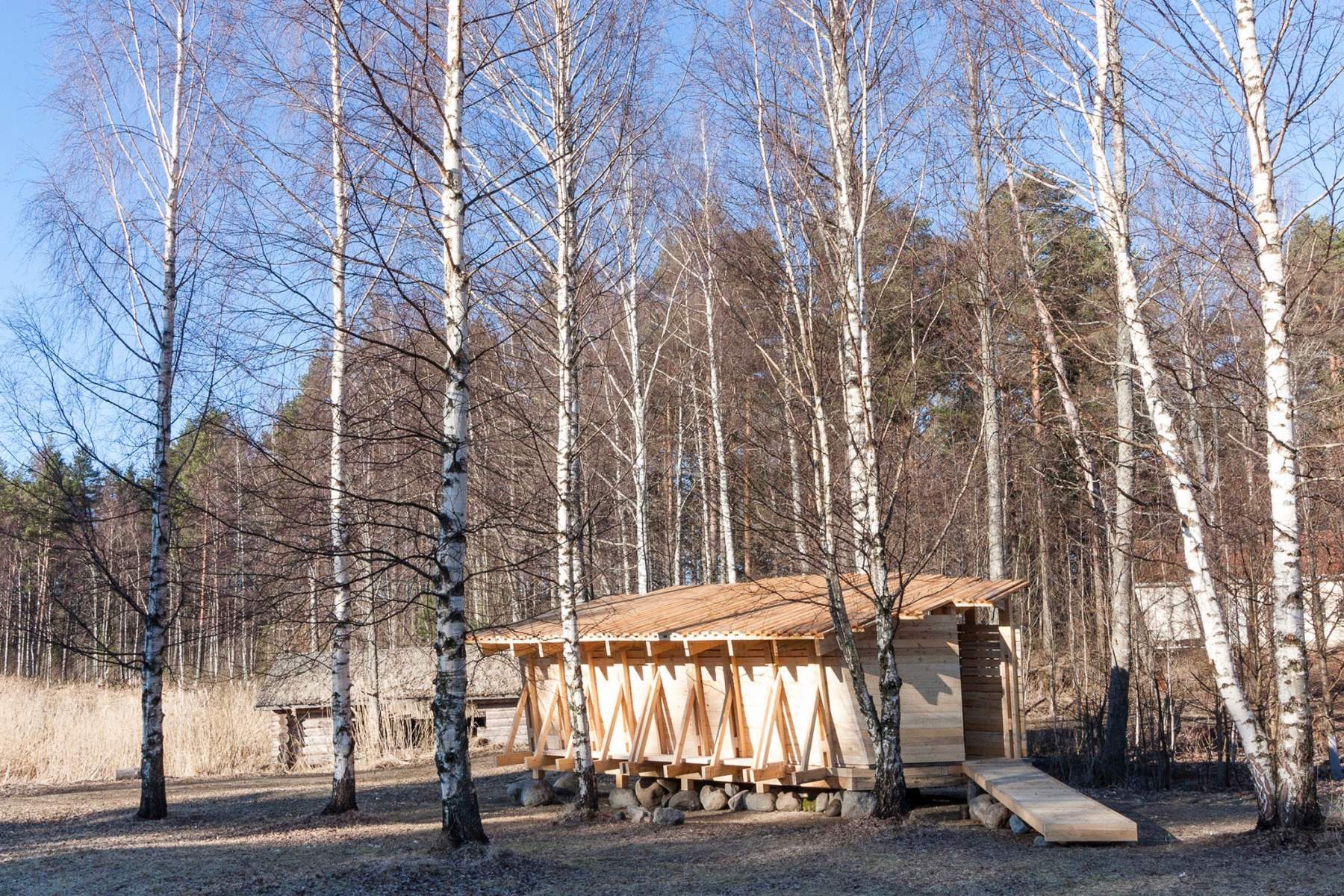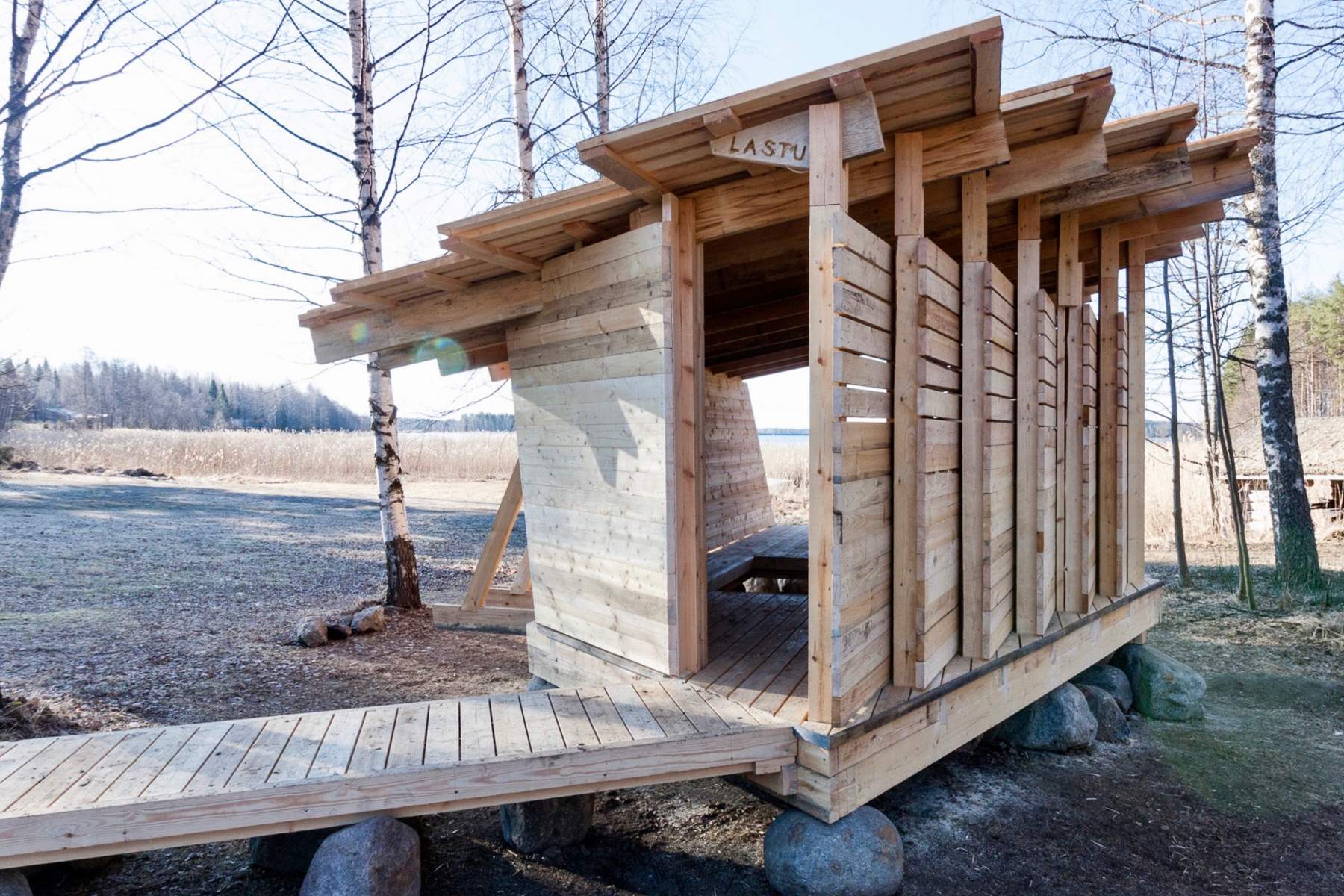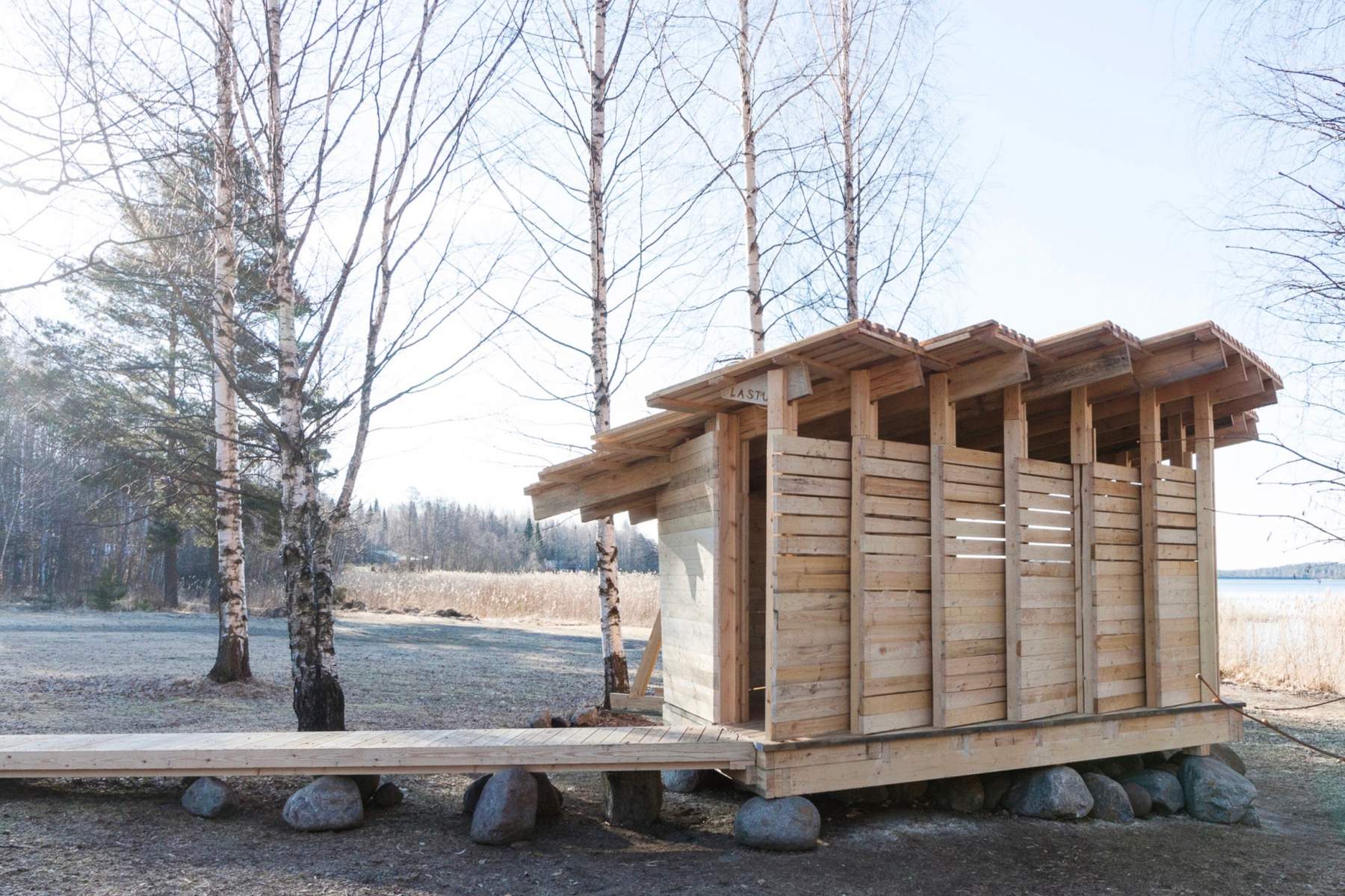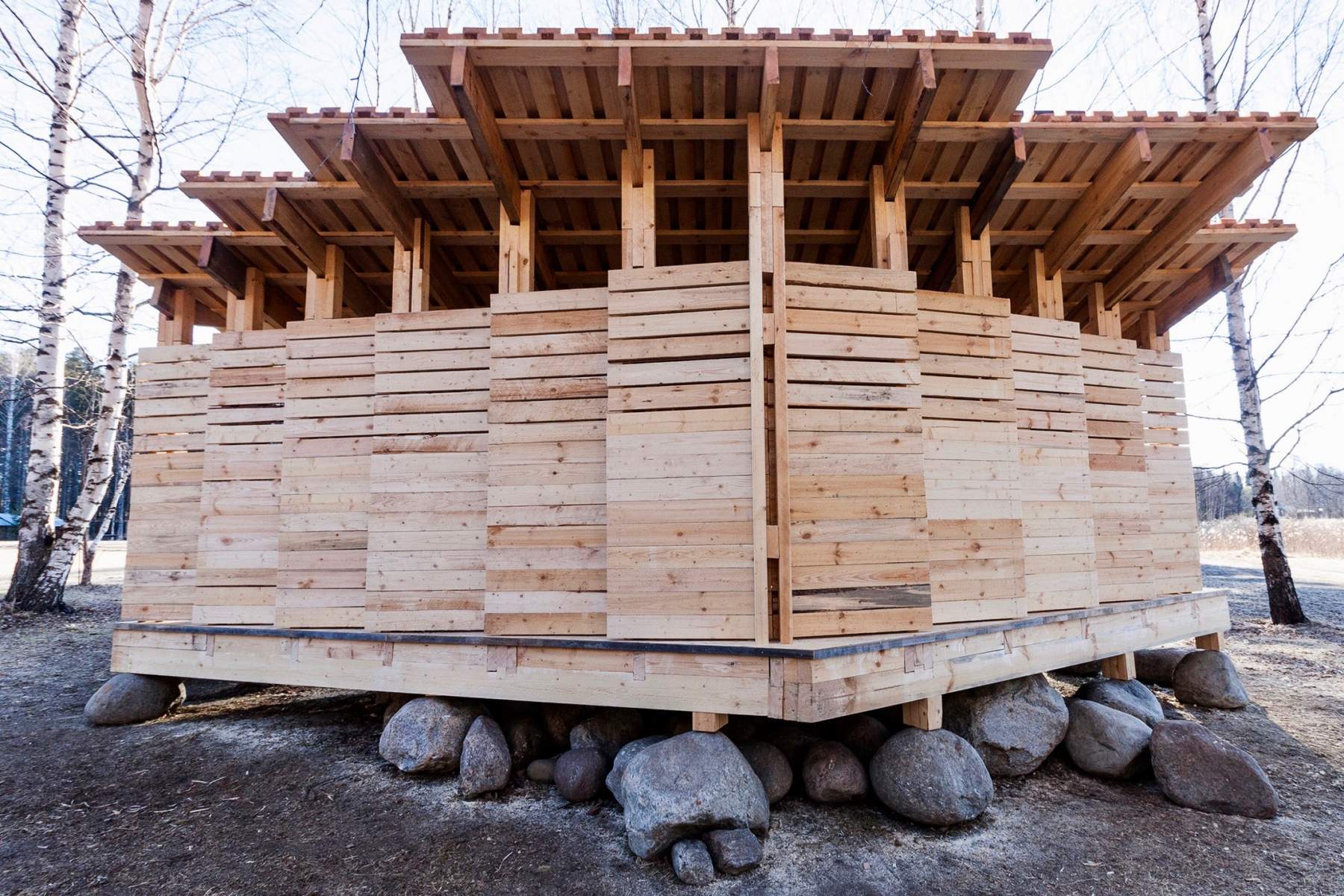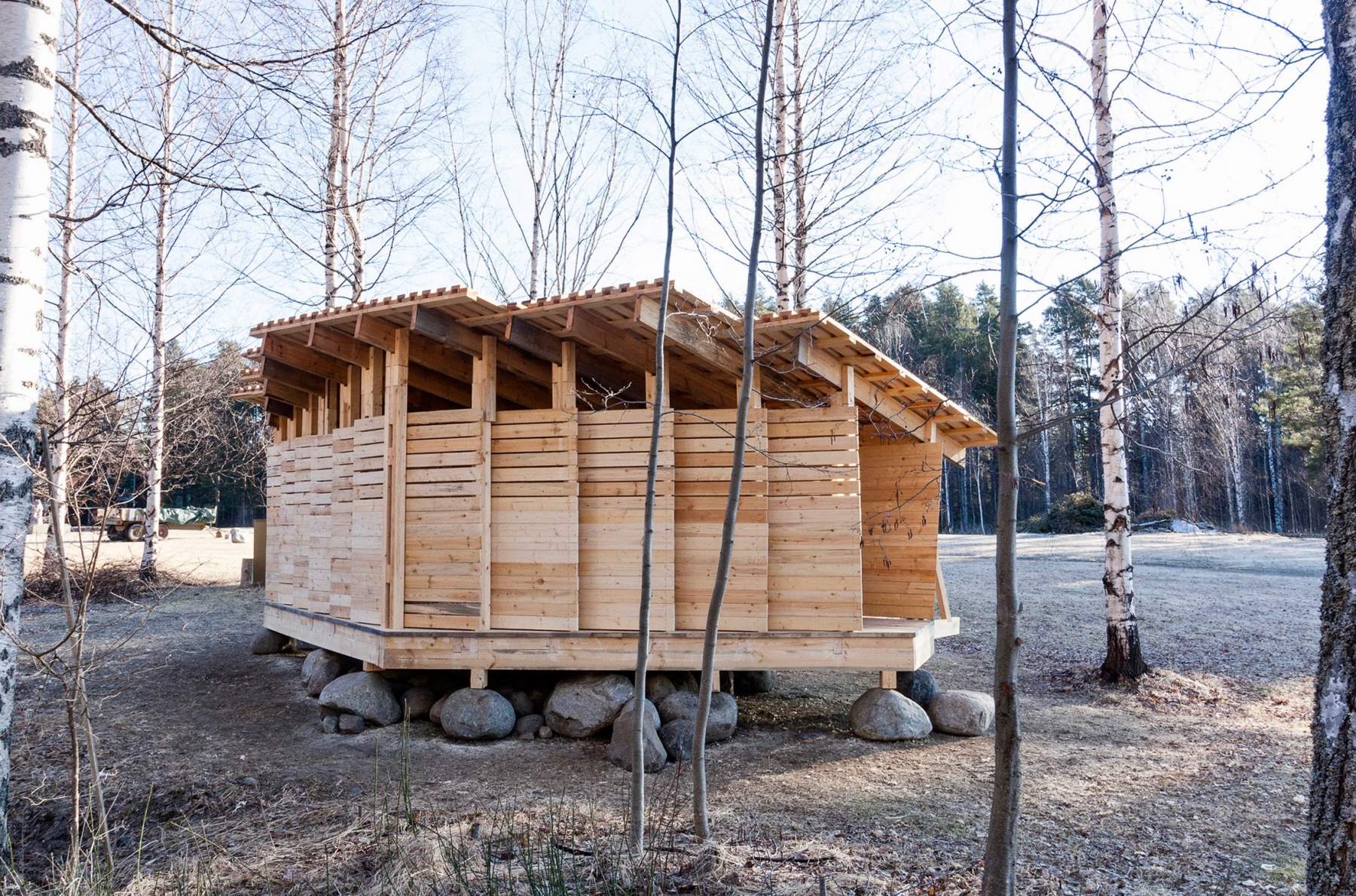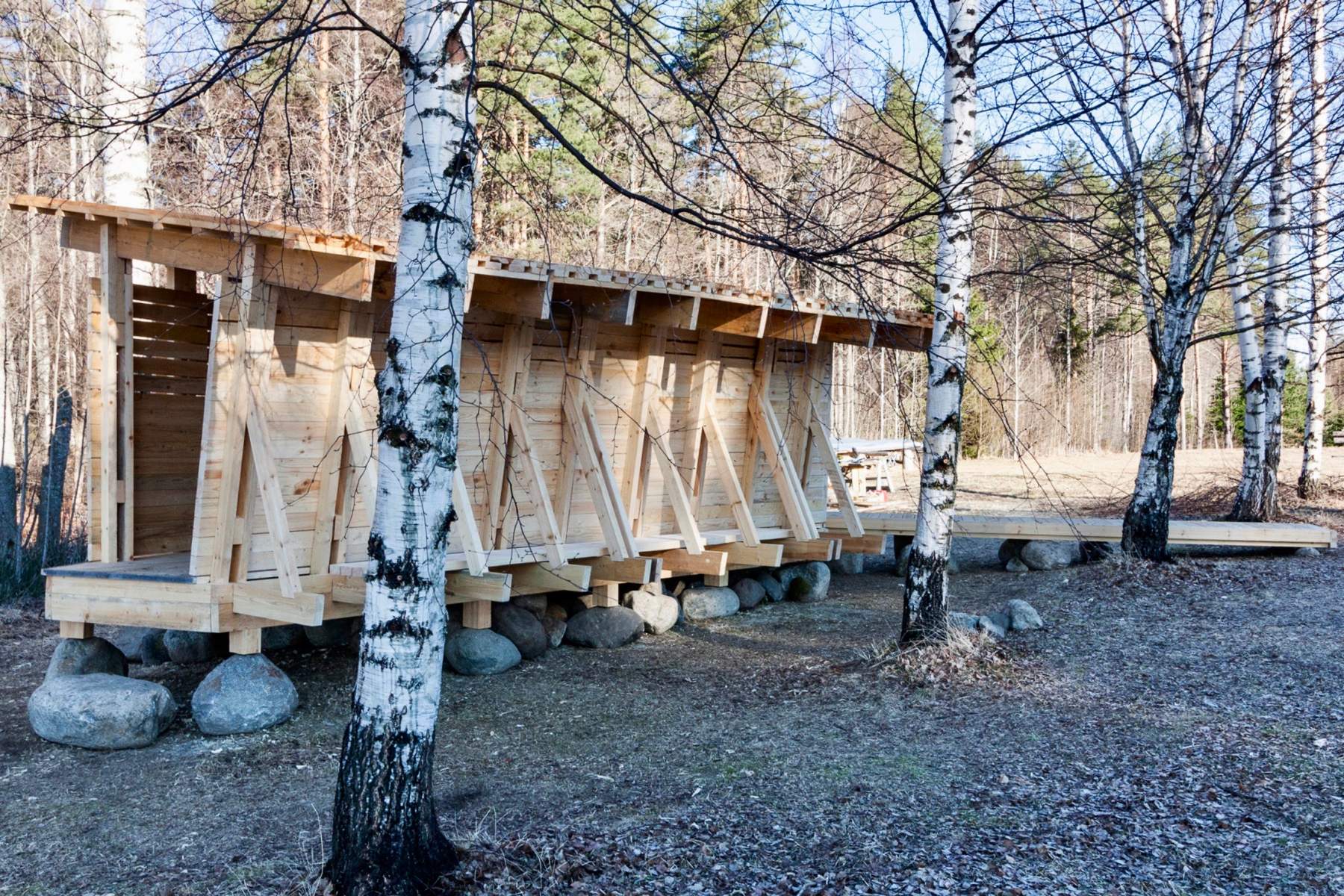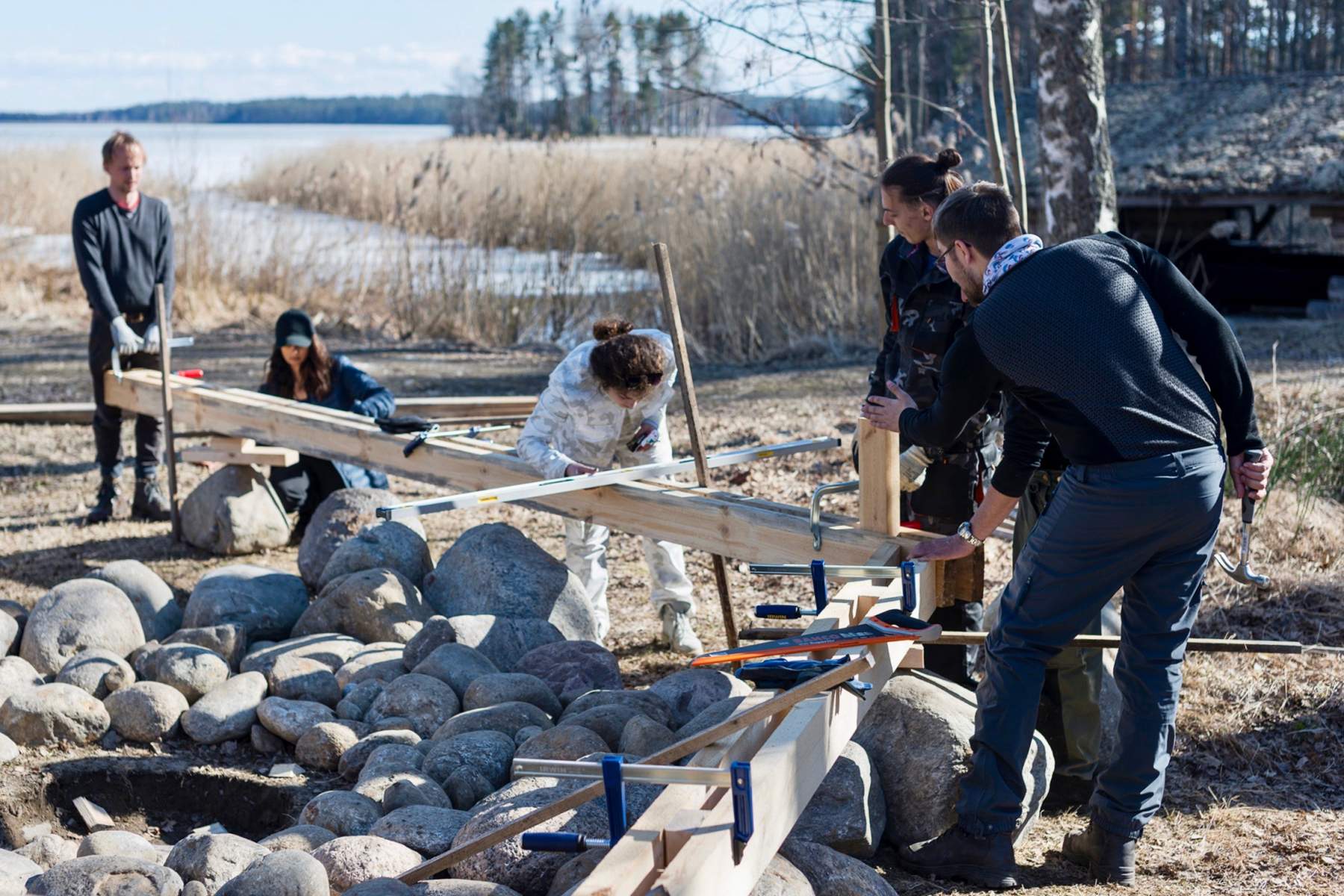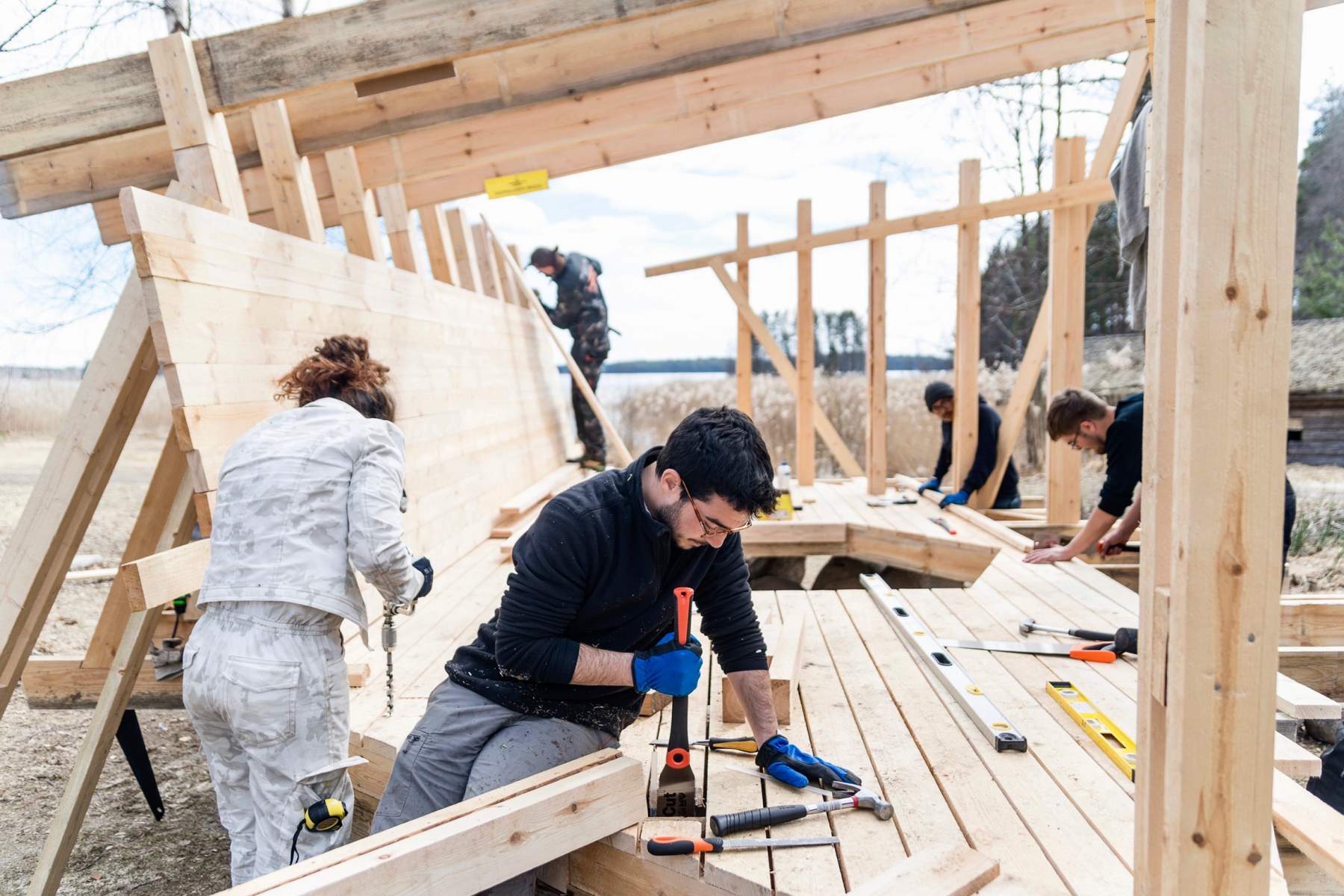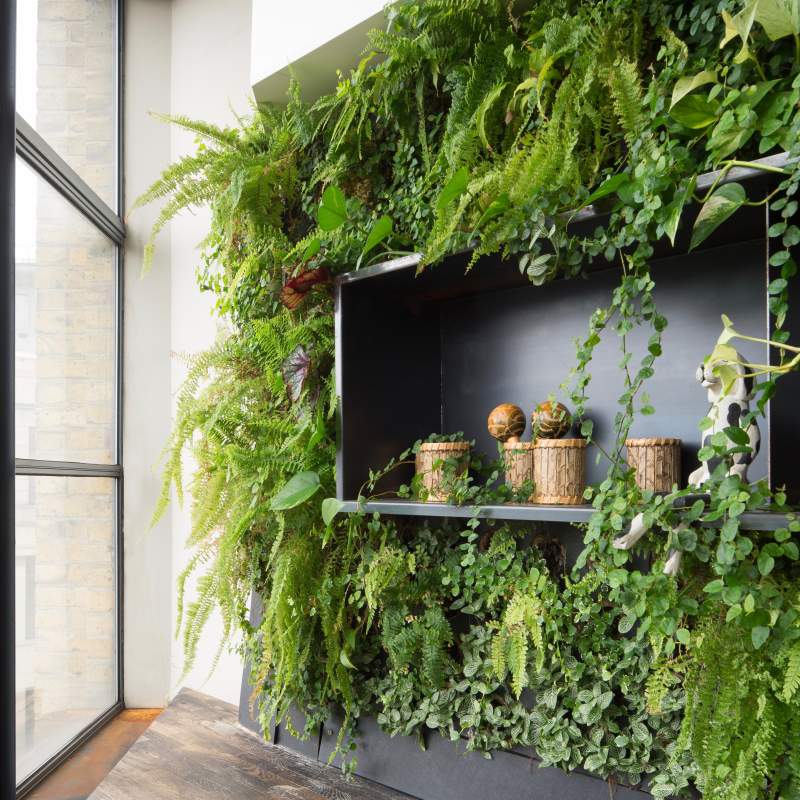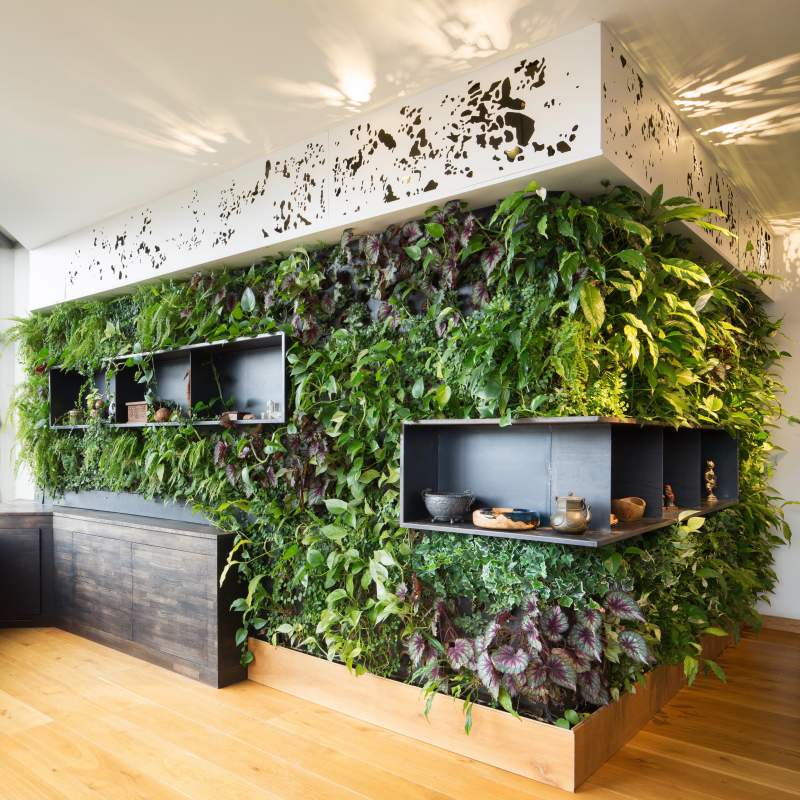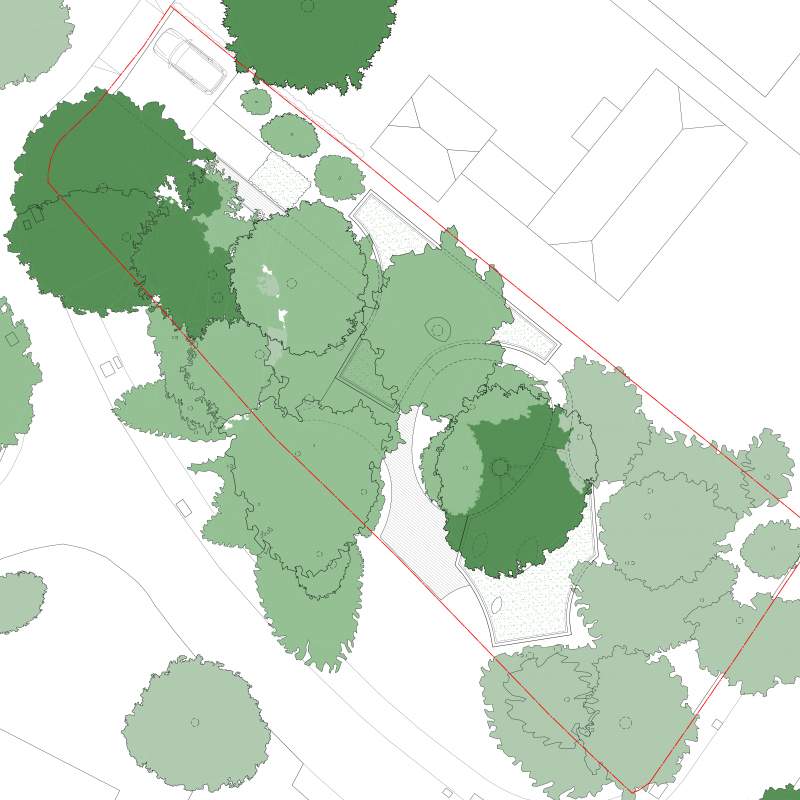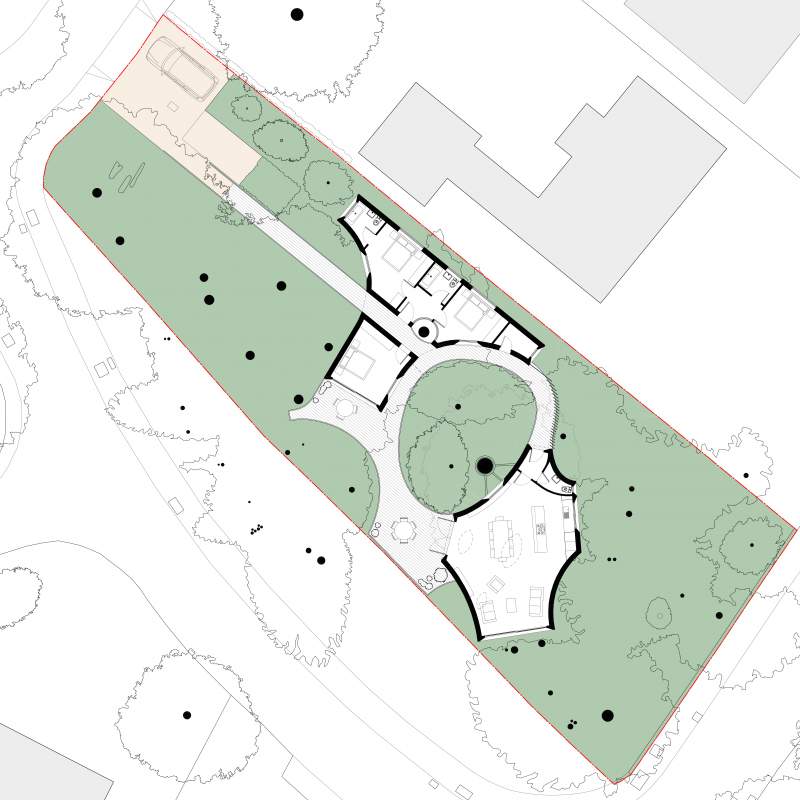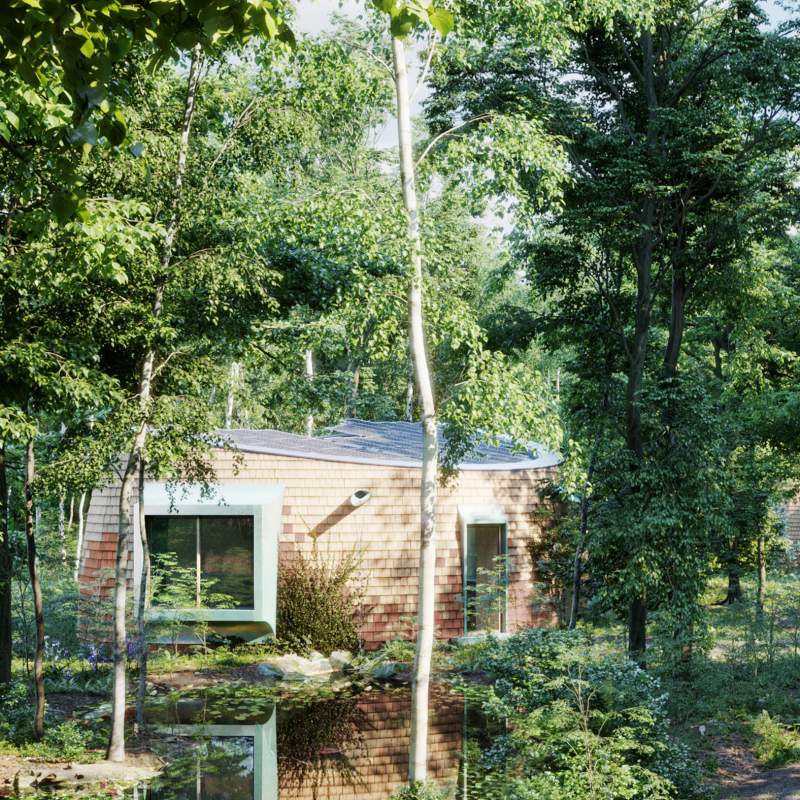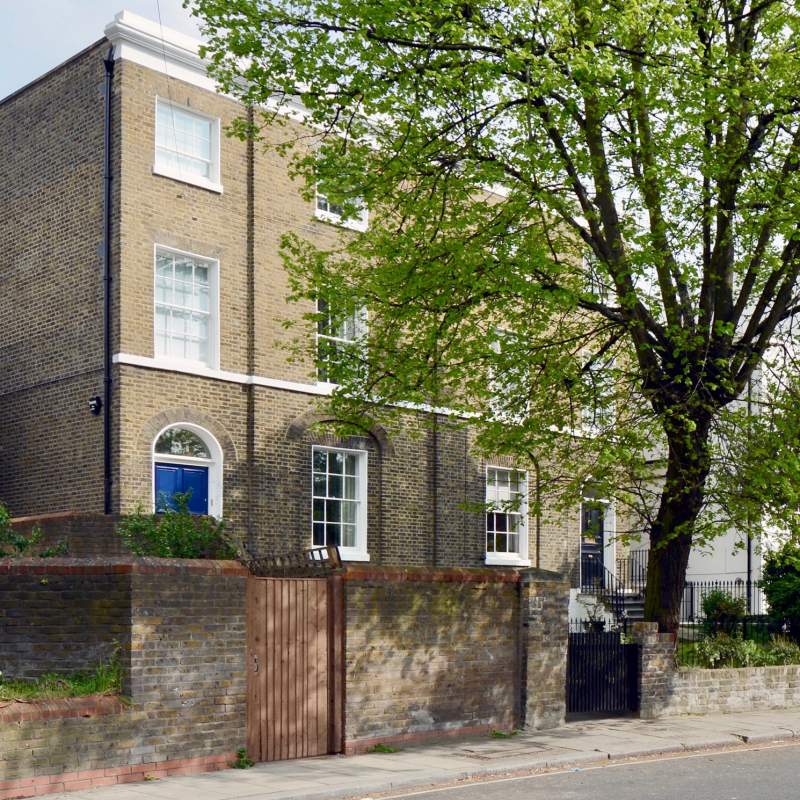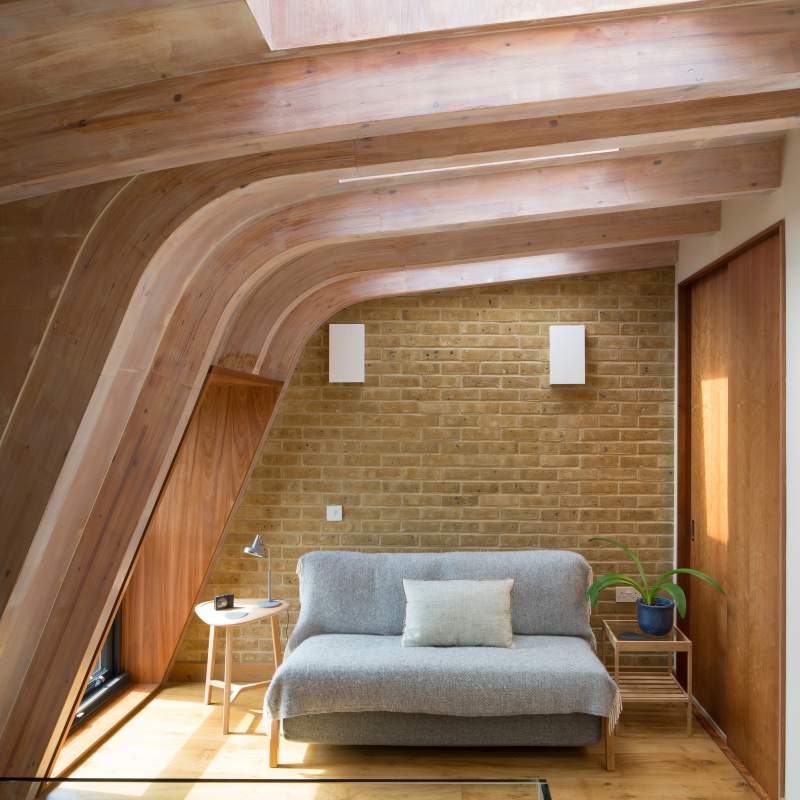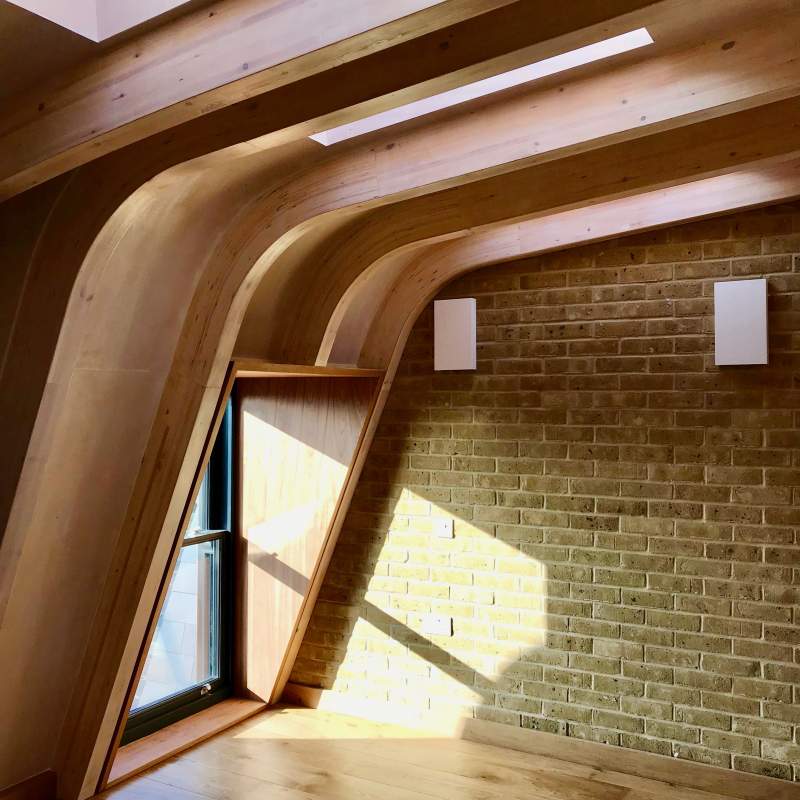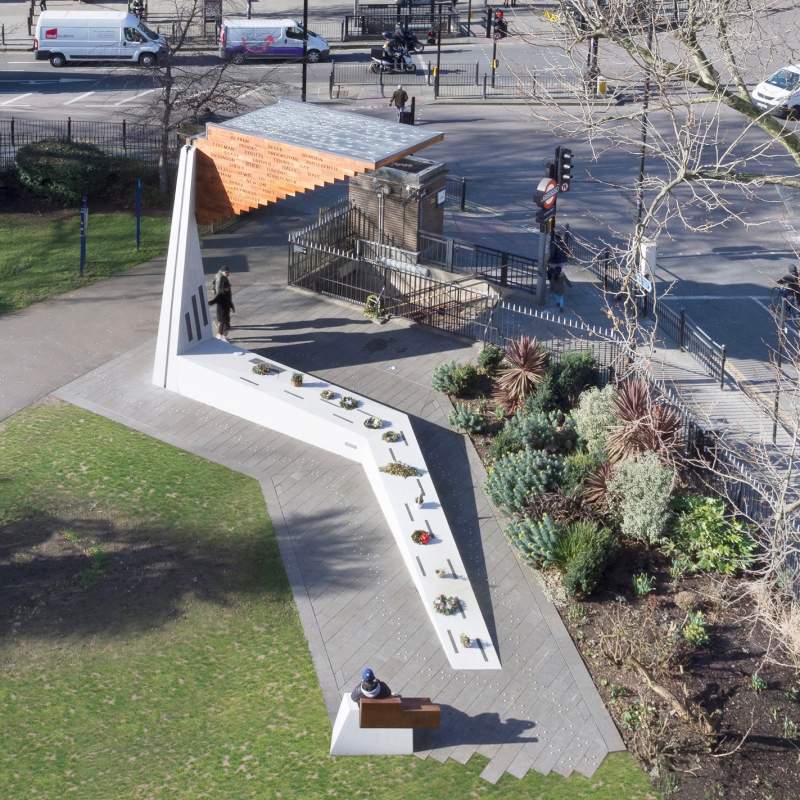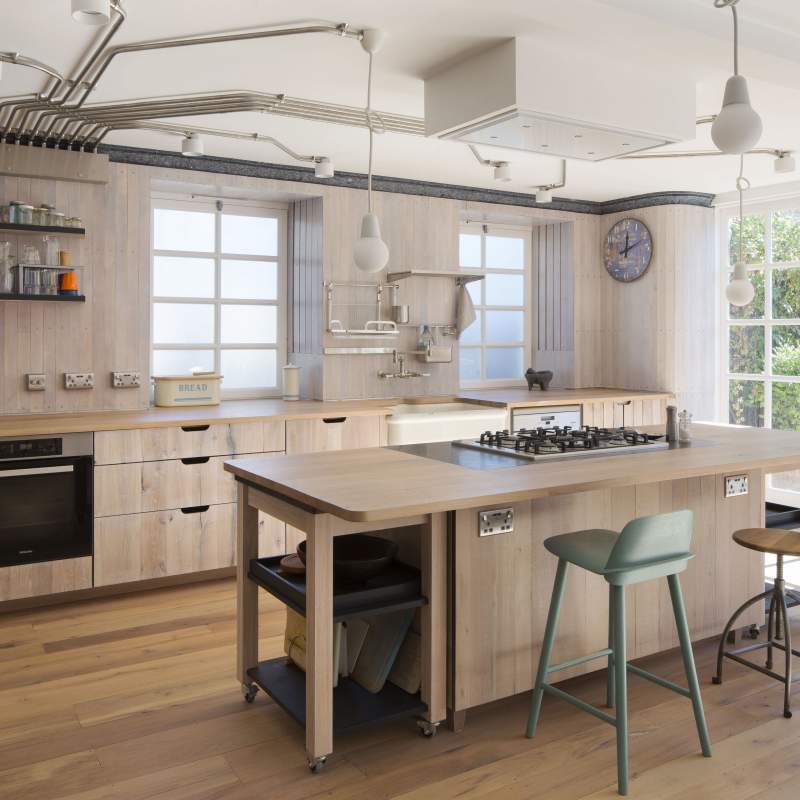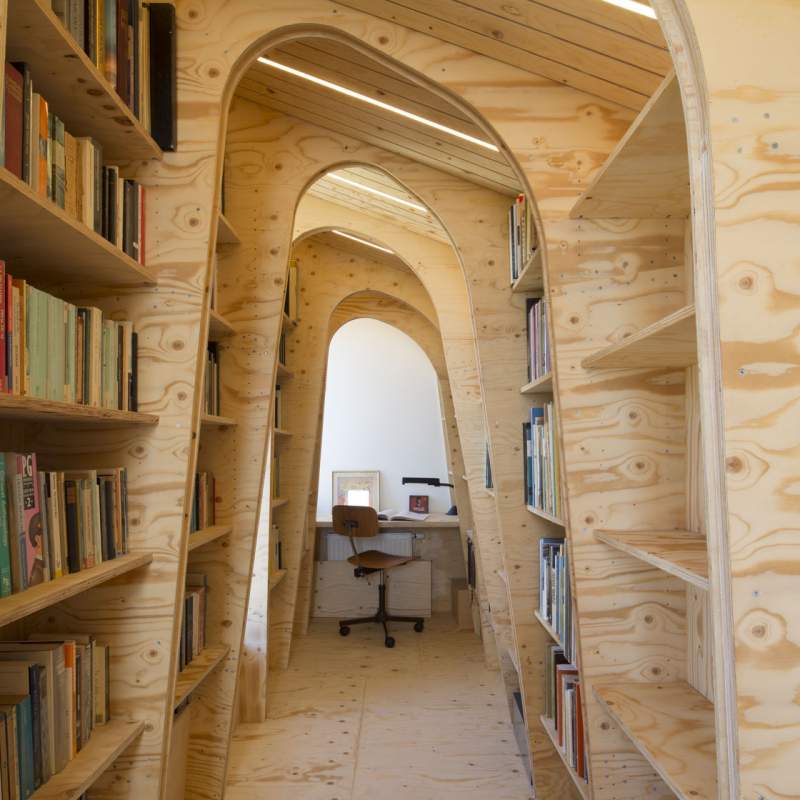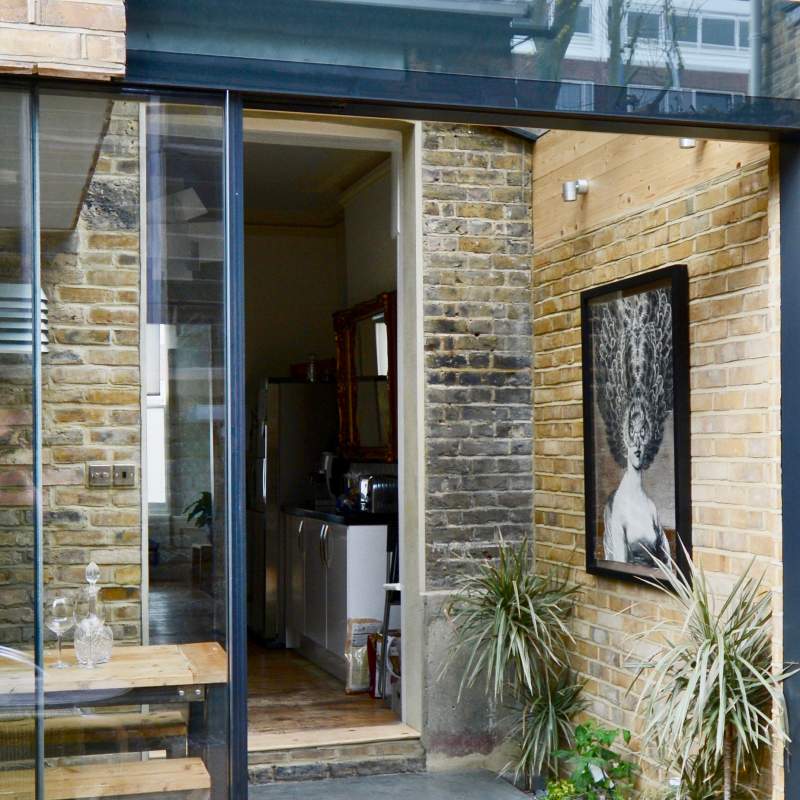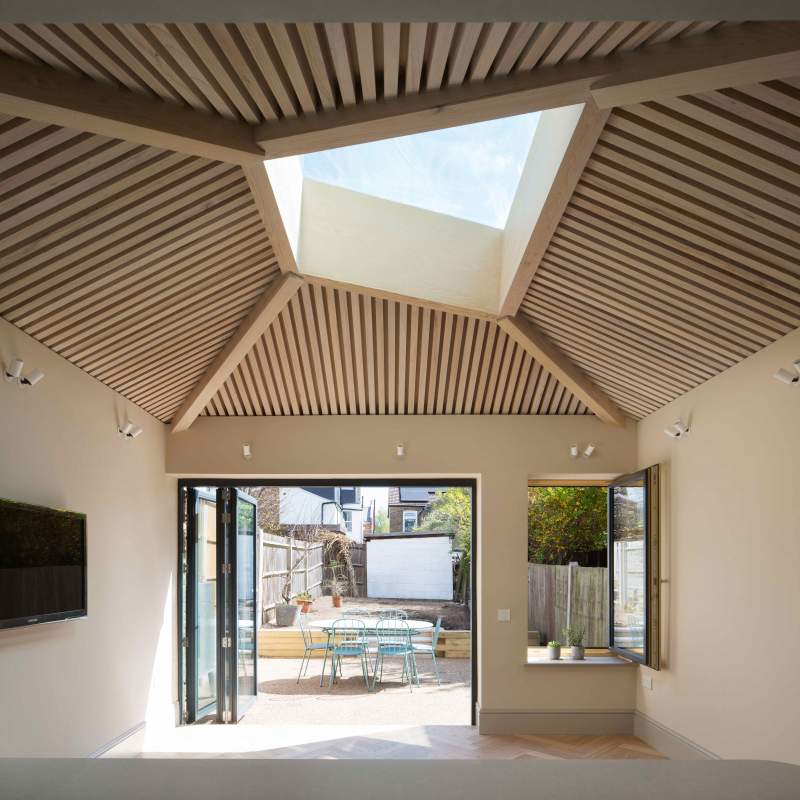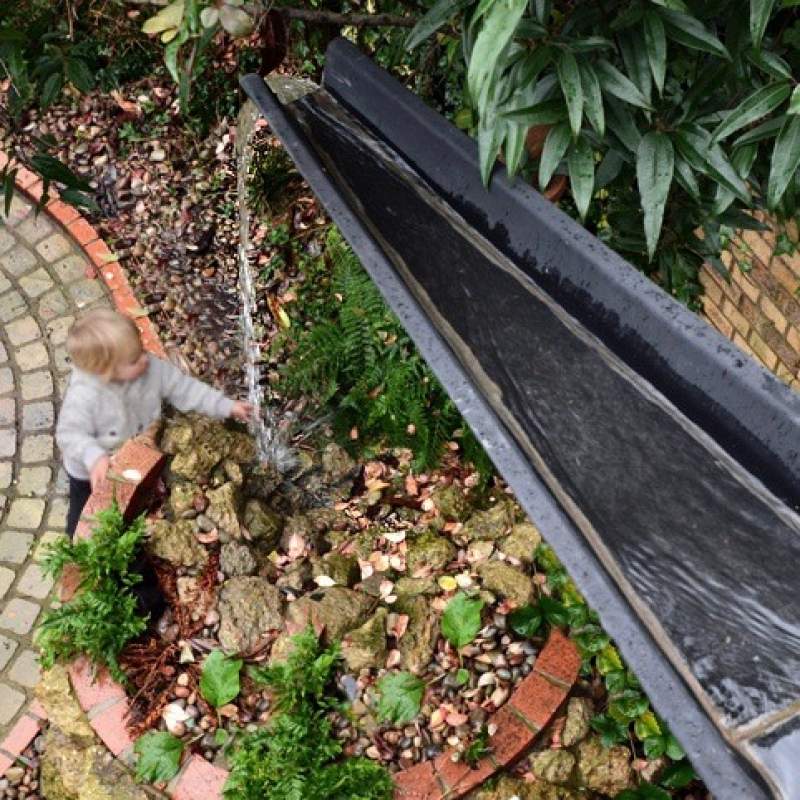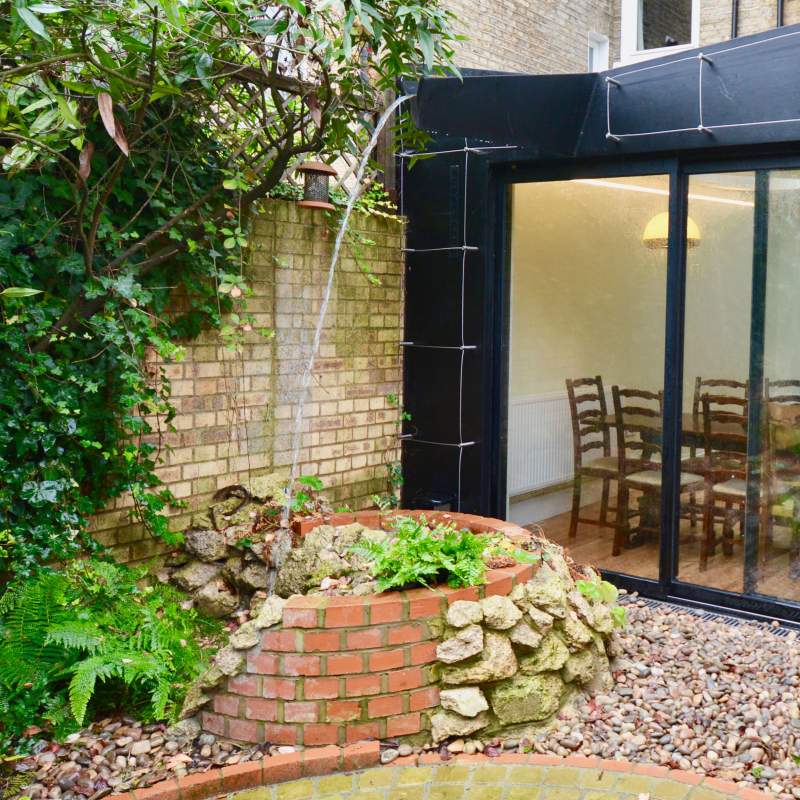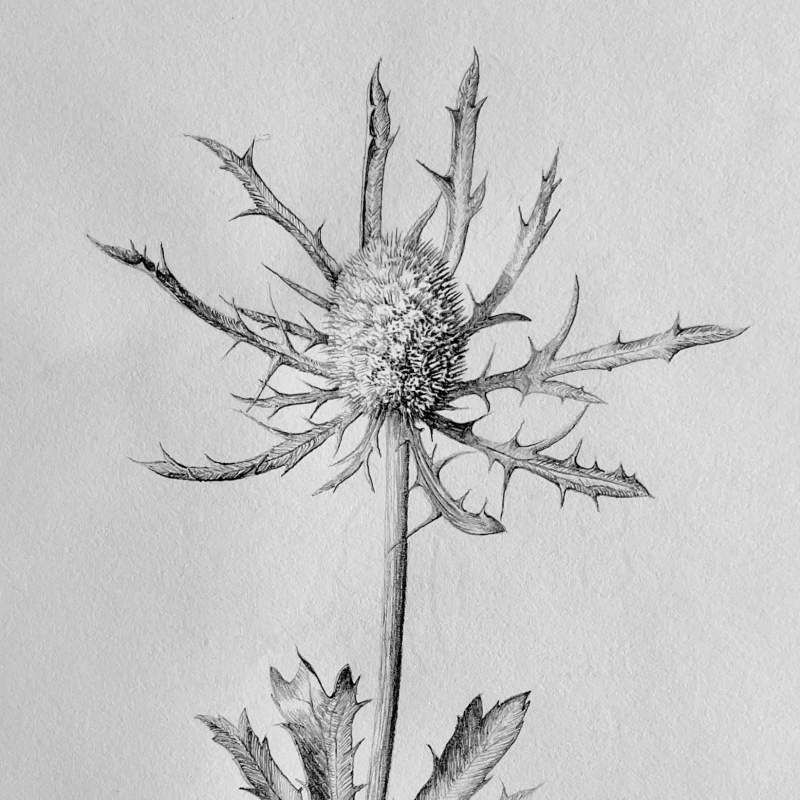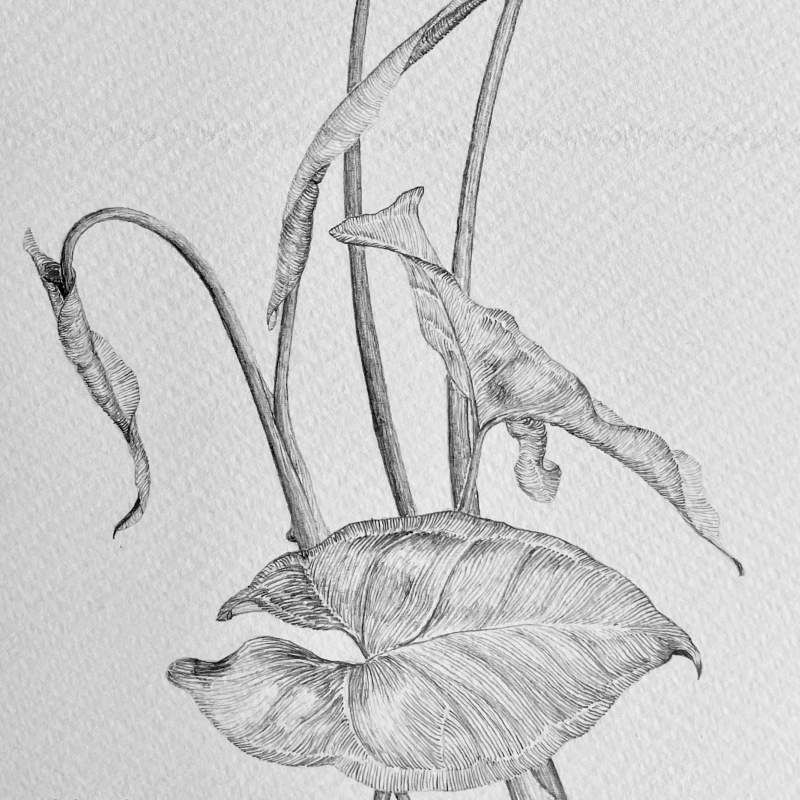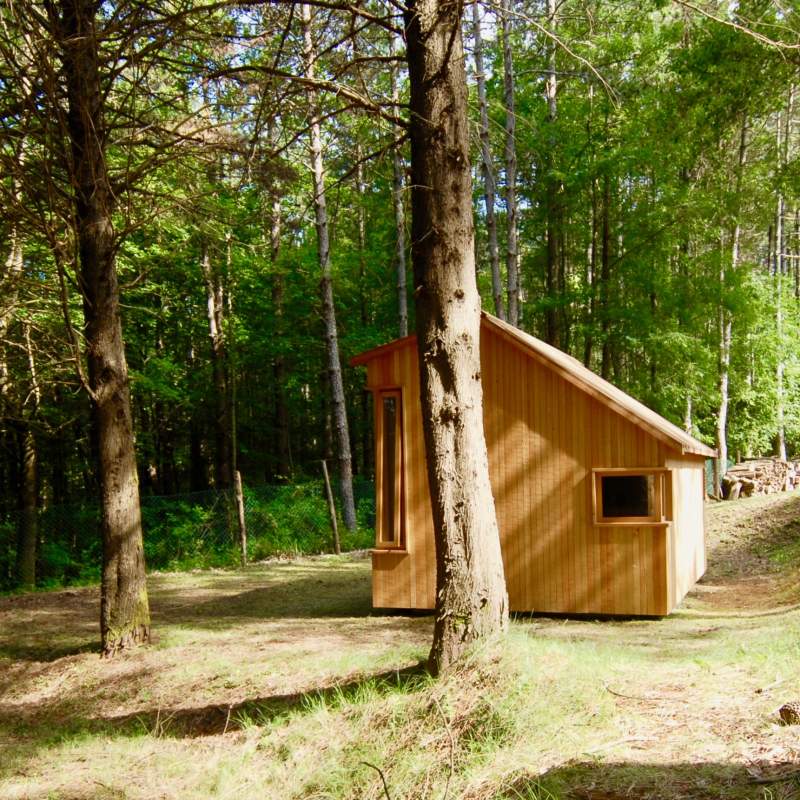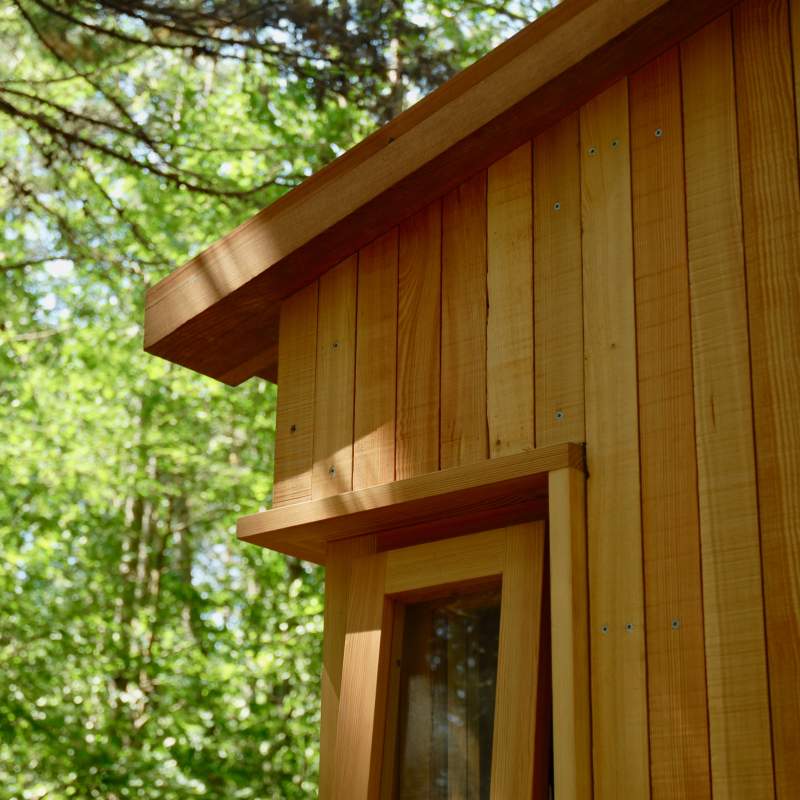Lastu
Our third year students at the University of Westminster designed and built a timber “laavu” or shelter in the Punkaharju forests of eastern Finland. The structure was built without the use of power tools from locally sawn Red Pine. Construction was completed in nine days under the guidance of architect Sami Rintala (Rintala Eggertsson) and Arboreal.
The shelter was built spontaneously and collectively without the use of drawings, simply by arranging and adjusting elements until the group agreed on the correct design. From footings to floor, to columns, walls and roof: each part was built in response to the former but without predetermining what was to follow. The result was an intimately site-specific structure that responded to the adjacent avenue of birch trees, the gently sloping ground and the serpentine edge of the nearby lake.
The floor, columns, walls and roofs were all built from hand-sawn timber and nails. Linseed oil was used to give the roof additional protection whilst all other members are left to weather. The structure may last just a few years or decades if regularly maintained. It forms a public gathering space for up to 20 people located just off a popular hiking and skiing path in the forest. It is in the grounds of the Lusto Forestry Museum and becomes one of their collection of timber structures and artefacts recording the last 100 years of forestry in Finland. The building was christened “Lastu” in empathy with the museum building nearby and meaning a flake of wood thrown out when cutting or chiselling wood.
The workshop was commissioned by the Finnish Institute in London. It was part of the Mobile Home 2017 project, a collaborative project between the Finnish Institute’s in Paris, Berlin and Benelux Countries. It was part of the Finland 100 programme celebrating the centenary of Finland’s independence in 2017. The building was opened to the public on 9th May, 2017.
Photography: Niklas Nabb, Maryam Saleemi, Ola Hjelen and Arboreal.

